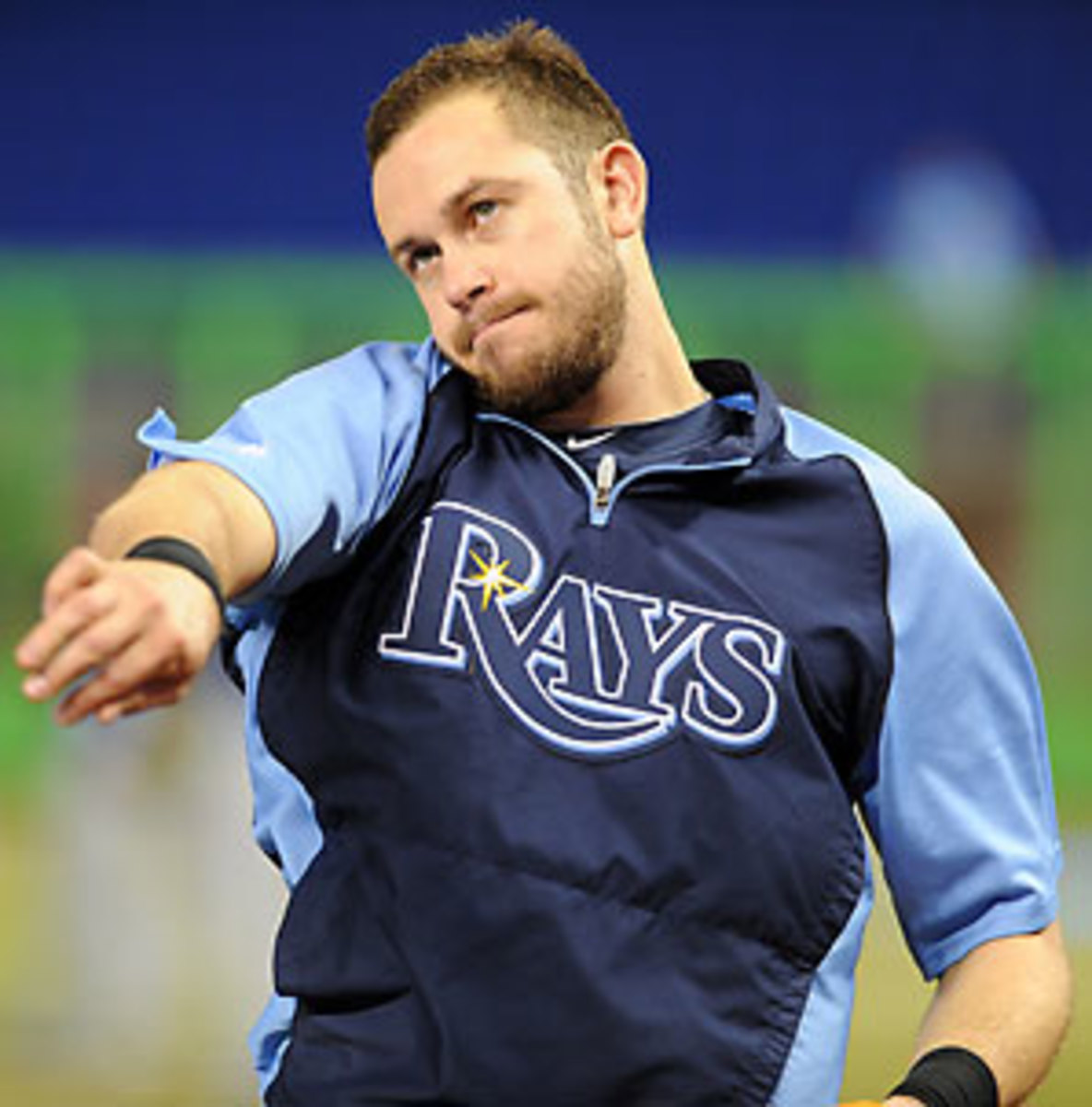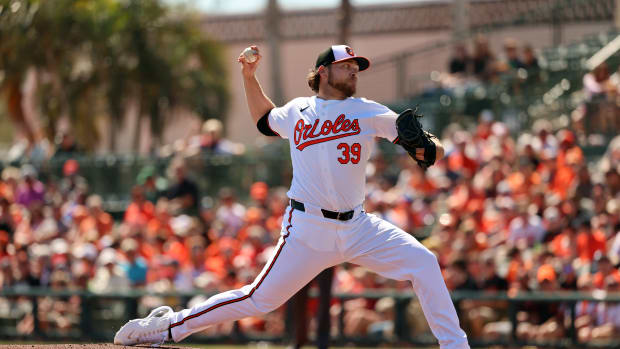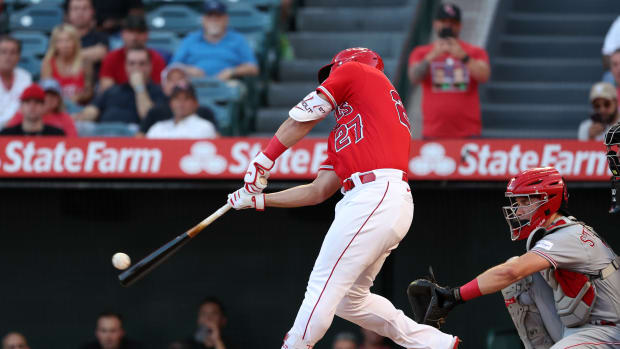Rays longing for absent Longoria
After having a setback during his rehab, Evan Longoria's return to action with the Rays is undetermined. (Icon SMI)
The American League East is the game's toughest division, with all five teams playing at .500 or better and carrying positive run differentials that back their strong won-loss records. If the season ended today, both AL Wild Cards would hail from the division, namely the Orioles and Rays. Although they own the fourth-best record in the league at 37-29, the latter's road appears to be getting tougher, as Evan Longoria, who has been sidelined since April 30 due to a left hamstring strain, suffered a setback during a rehab assignment on Monday night, pulling himself from the game after one plate appearance. Like a groundhog popping out from his hole on February 2 and seeing his shadow, that means the Rays are in for several more weeks of the status quo.
That status quo is rather middling. The Rays were 15-8 when Longoria went down, clinging to a one-game lead atop the division through April 30. Since then, they're 22-21, which has allowed the streaking Yankees (28-15 during that span) to make up 6 1/2 games in the standings, and the Orioles (24-19) to climb 2 1/2 games and maintain second place. Tampa Bay's offense, which was chugging along at a clip of 4.61 runs per game with him in the lineup, is down to 4.00 without him, because while Longoria was knocking the stuffing out of the ball (.329/.433/561), his replacements are hitting like they've been stuffed and mounted themselves (.234/.285/.329).
Chief among those replacements has been Sean Rodriguez, who began the year as the team's starting shortstop before shifting over to the hot corner. An above-average fielder who offers more in the way of secondary skills on offense — a bit of pop and some speed — than primary ones, he has hit just .217/.266/.343, down from last year's .223/.323/.357. Appreciating the difference between those two lines is easier when one adjusts for the impoverished hitting environment of Tropicana Field. To do that, we can use Baseball Prospectus' True Average stat, which expresses runs per plate appearance on a batting average scale (.300 good, .260 average, .230 replacement level) and adjusts for both part and league scoring levels. Rodriguez posted a .252 True Average last year (two points lower than the major league average for shortstops), while he's at a sub-replacement level .223 this year. That's even more costly given that the bar for third basemen (.260 this year) is much higher than that for shortstops (.247).
Basically, Rodriguez has been overexposed. The righty has shown himself to be a legitimate force against lefties (.274/.377/.456 in 318 plate appearances from 2009-2011) but a pushover against righties (.212/.276/.333 in 525 PA, 62 percent of his playing time). This year, he's hitting .210/.230/.371 in 152 PA against the latter, a share that amounts to 69 percent of his playing time. Recently, manager Joe Maddon has taken to trying switch-hitter Drew Sutton and lefty swinger Will Rhymes at third, at least against righties, but neither has been appreciably better than Rodriguez in their limited opportunities; the former is hitting .250/.298/.341 in 47 PA, the latter .239/.306/.261 in 98 PA. The lone bright spot in the situation has been Elliot Johnson, a 28-year-old journeyman who has hit .275/.345/.396 in 168 PA while swiping the regular shortstop duties from Rodriguez.
Johnson's True Average of .285 ranks fourth among the Rays regulars, behind Longoria (.360), Matt Joyce (.332), Ben Zobrist (.291) and Carlos Pena (.279, despite a .199/355/.350 line that doesn't look like much). Basically, those are the only hitters giving the team better-than-average production at their positions, and the best of them is on the shelf. B.J. Upton (.263) and Desmond Jennings (.255) have underproduced, with the latter just returning after missing over three weeks due to a sprained left knee. The catching and DH tandems (Jose Molina and Jose Lobaton for the former, Hideki Matsui and the now-injured Luke Scott for the latter) have lagged even further below average.
Meanwhile, although the Rays have outscored their opponents by 20 runs (286-266) and are known for the high caliber of their pitching, some of that is just a park effect in disguise as well. While their 4.33 runs scored per game is the league's sixth-lowest mark, the 4.03 they're allowing is fifth, not a huge imbalance for a playoff-caliber team. While they're slightly better than league average in terms of home run and walk rates, and well ahead on strikeout rate (their 8.3 per nine is second), they're actually three points below league average in defensive efficiency (.694 to .697) despite Tropicana Field's offense-suppressing environment and their penchant for frequent defensive shifts. The overall .270 BABIP at the Trop is the majors' fourth-lowest, but the Rays hitters lag well behind their opponents (.258 to .280). Longoria is an elite glove man, so it's fair to suggest they're feeling his absence in the field as well.




































